Address
304 North Cardinal
St. Dorchester Center, MA 02124
Work Hours
Monday to Friday: 7AM - 7PM
Weekend: 10AM - 5PM
Address
304 North Cardinal
St. Dorchester Center, MA 02124
Work Hours
Monday to Friday: 7AM - 7PM
Weekend: 10AM - 5PM
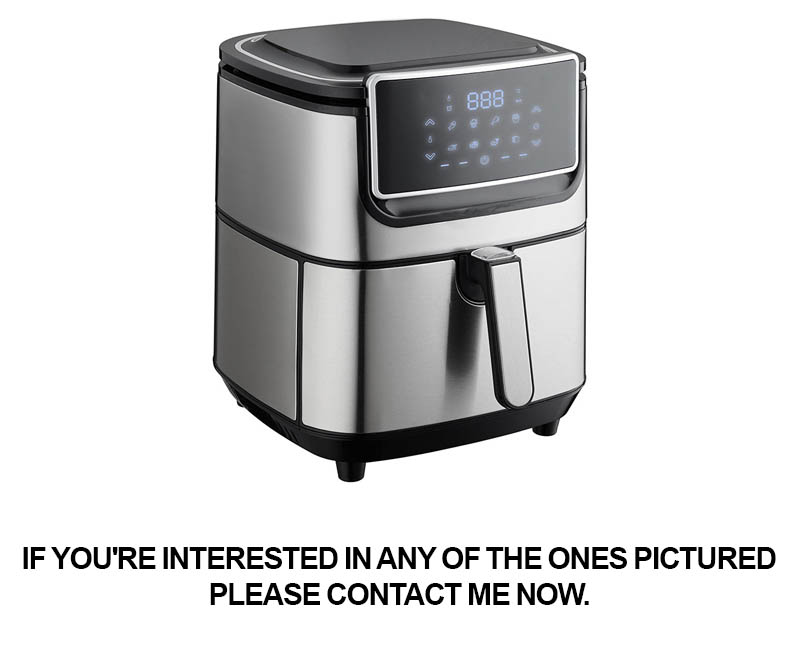
As the culinary landscape continues to evolve, one trend that has gained significant traction is the rise of commercial air fryers. These innovative kitchen appliances are not just revolutionizing the way we cook, but also reshaping the foodservice industry as a whole. Their ability to deliver crispy, delicious fried foods with minimal oil has sparked a wave of interest, prompting a closer look at the commercial air fryer market, its latest trends, and the impact of technological advancements on its production. This exploration will delve into the key statistics shaping the commercial air fryer sector, the importance of choosing the right factory for manufacturing these appliances, and success stories that illustrate the transformative power of commercial air fryers. Additionally, we will gaze into the future to understand what predictions and prospects lie ahead for this burgeoning industry.
The commercial air fryer has emerged as a game-changer in the culinary world, revolutionizing the way we think about cooking and health. Once a niche product, these countertop wonders have now become a staple in professional kitchens, from bustling restaurants to busy cafes. Let’s delve into the reasons behind this meteoric rise and explore how commercial air fryers are transforming the kitchen landscape.
Once confined to home use, air fryers have expanded their reach into the commercial sector, offering a host of benefits that traditional cooking methods simply can’t match. At the heart of this transformation is the promise of healthier cooking. With air fryers, chefs can achieve crispy, golden results without the need for excessive oil, significantly reducing the calorie count and fat content of dishes.
The technology behind commercial air fryers is both simple and ingenious. By circulating hot air around the food at high speeds, these appliances mimic the frying process but with a fraction of the oil. This not only makes the food healthier but also faster to cook, as the hot air rapidly cooks the food from all sides. The result is a deliciously crispy exterior and a tender interior, all while preserving the natural flavors and nutrients of the ingredients.
In the competitive world of commercial cooking, efficiency is key. Commercial air fryers have been designed with productivity in mind, allowing chefs to cook larger quantities of food in less time. This is particularly beneficial for establishments that serve a high volume of customers, such as fast-food restaurants and caterers. The ability to cook more with less effort has made air fryers a must-have for any kitchen looking to streamline operations.
Moreover, the versatility of commercial air fryers is unmatched. They can handle a wide range of foods, from fried chicken and French fries to vegetables and seafood. This versatility means that chefs can easily incorporate air-fried dishes into their menus without the need for additional equipment or cooking techniques. It’s a win-win situation for both the kitchen staff and the customers, who enjoy a diverse array of flavorful options.
The cost-effectiveness of commercial air fryers is another compelling reason for their rise in popularity. While the initial investment may be higher than traditional fryers, the long-term savings are substantial. With less oil required and the potential for energy-efficient operation, these appliances can lead to significant cost reductions over time. For businesses operating on tight budgets, this is a game-changer that can help keep the bottom line healthy.
In terms of maintenance, commercial air fryers are a breeze to clean. The non-stick surfaces and easy-to-remove parts make it simple to wipe away any residue, ensuring that the appliance stays in top condition for years to come. This ease of maintenance is crucial in a busy kitchen where time is of the essence.
The environmental impact of commercial cooking has also become a significant concern. Commercial air fryers offer a greener alternative to traditional fryers, which can consume large amounts of oil and produce more waste. By reducing oil usage and waste, these appliances are contributing to a more sustainable future for the foodservice industry.
The rise of commercial air fryers is not just a trend; it’s a shift in the way we approach cooking. Chefs and kitchen managers are increasingly recognizing the value that these appliances bring to their operations. From health benefits to cost savings and environmental considerations, the advantages of commercial air fryers are hard to ignore.
As the market for commercial air fryers continues to grow, manufacturers are responding with innovative features and designs. Some models now come with programmable settings, allowing chefs to easily replicate their favorite recipes or experiment with new ones. Others offer advanced temperature controls and timers, ensuring that food is cooked to perfection every time.
In conclusion, the rise of commercial air fryers is a testament to the evolving demands of the culinary world. These appliances are not just a passing fad; they are a fundamental change in how we think about cooking. As we move forward, it’s clear that commercial air fryers will play a pivotal role in shaping the future of the kitchen.

The commercial air fryer market has experienced a meteoric rise in recent years, transforming the culinary landscape and reshaping the way kitchens operate across various industries. With a quick overview, we delve into the key aspects that have propelled this market to new heights.
Market Dynamics: The commercial air fryer market is driven by a growing demand for healthier cooking methods. As consumers become more health-conscious, the demand for low-fat, crispy fried foods has surged, making air fryers a popular choice in restaurants, cafes, and fast-food chains.
Technological Advancements: The evolution of air fryer technology has been a pivotal factor in the market’s growth. Modern commercial air fryers are equipped with features like adjustable temperature settings, timer controls, and programmable settings, allowing for precise cooking and reducing the risk of burning.
Cost-Effectiveness: One of the most compelling reasons for the market’s expansion is the cost-effectiveness of commercial air fryers. These appliances are energy-efficient, consuming less power than traditional fryers, which translates to lower operational costs for businesses.
Versatility in Cooking: Commercial air fryers offer a wide range of cooking capabilities, from frying to roasting and baking. This versatility allows chefs to prepare a diverse menu without the need for multiple cooking appliances, streamlining kitchen operations and reducing equipment costs.
Health Benefits: The health benefits of air frying are undeniable. Unlike traditional deep frying, air frying uses hot air to circulate around the food, resulting in crispy textures with up to 80% less oil. This has made air fryers a favorite among health-conscious consumers and those looking to reduce their fat intake.
Market Segmentation: The commercial air fryer market is segmented into various categories, including countertop models, countertop with countertop, and integrated models. Each segment caters to different market needs, from small-scale operations to large commercial kitchens.
Global Market Trends: The market has seen significant growth in regions like North America, Europe, and Asia-Pacific. In North America, the market is driven by the growing preference for healthier eating habits, while in Europe, the demand is fueled by the increasing popularity of quick-service restaurants (QSRs).
Competitive Landscape: The commercial air fryer market is highly competitive, with numerous manufacturers vying for market share. Key players are constantly innovating and improving their product offerings to meet the evolving demands of the market.
Regulatory Environment: The regulatory environment plays a crucial role in the commercial air fryer market. As health and safety standards become more stringent, manufacturers must comply with these regulations, ensuring that their products are safe for use in commercial settings.
Future Outlook: Looking ahead, the commercial air fryer market is expected to continue growing, driven by technological advancements, increasing health awareness, and the need for efficient kitchen appliances. The integration of smart technology and AI into air fryers is also anticipated to open new avenues for market expansion.
Consumer Preferences: Consumer preferences are shifting towards convenience and health, and commercial air fryers are perfectly positioned to cater to these trends. The ability to cook a variety of foods with minimal oil and in less time is likely to attract more customers to restaurants and cafes that use these appliances.
Environmental Impact: The environmental benefits of air frying cannot be overlooked. With the growing emphasis on sustainability, commercial air fryers, which use less oil and less energy, are becoming more attractive to eco-conscious businesses and consumers.
Supply Chain Considerations: The supply chain for commercial air fryers is complex, involving the sourcing of high-quality components, assembly, and distribution. Ensuring a reliable and efficient supply chain is essential for manufacturers to meet the market’s demand.
Innovation in Design: Manufacturers are focusing on innovation in design to make commercial air fryers more user-friendly and efficient. Features like easy-to-clean surfaces, user-friendly interfaces, and compact designs are becoming increasingly important in the market.
Economic Factors: Economic factors, such as fluctuations in raw material prices and changes in the global economic landscape, can impact the commercial air fryer market. Manufacturers must be prepared to adapt to these changes to maintain profitability.
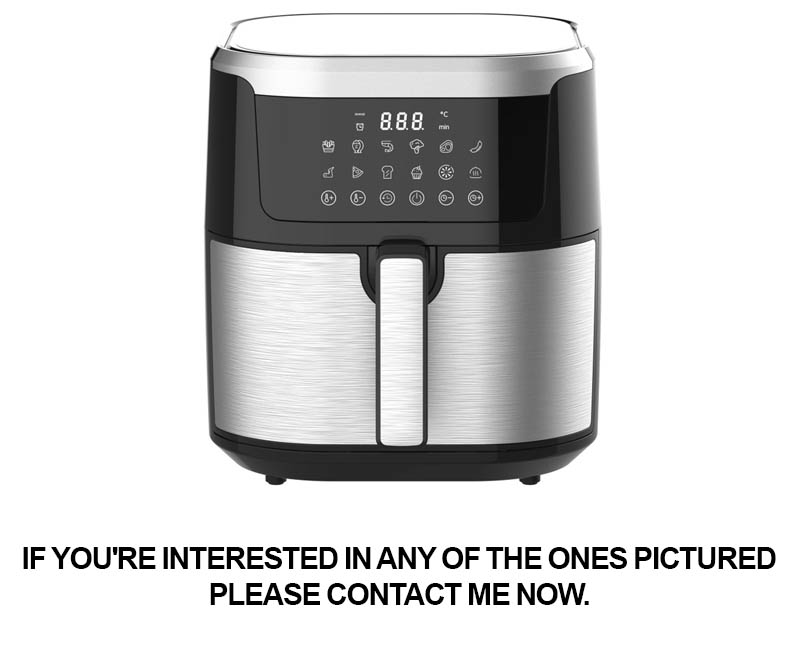
In the bustling commercial kitchen landscape, where efficiency and innovation are paramount, the commercial air fryer has emerged as a game-changer. These appliances, once a rarity, have now become a staple, and their designs have evolved to meet the demands of professional chefs and busy kitchens. What sets the best commercial air fryers apart?
Firstly, the heating element is a cornerstone of a commercial air fryer’s design. High-quality models incorporate rapid and even heating systems that ensure consistent temperatures, crucial for maintaining the texture and flavor of fried foods. These elements often feature advanced technology that minimizes hotspots, which can lead to uneven cooking and potential burns.
The size and capacity of a commercial air fryer are also pivotal. The best units are available in a range of sizes, from compact countertop models suitable for smaller establishments to large industrial fryers that can handle the volume of a bustling café or restaurant. These fryers are designed to maximize space without compromising on performance, making them ideal for kitchens where every square inch counts.
Durability is another key aspect. Commercial air fryers are subjected to rigorous use, so they must be built to withstand constant operation. Premium fryers often feature heavy-duty construction with stainless steel components, ensuring that they can handle the high heat and pressure of professional cooking environments. This not only prolongs the life of the appliance but also reduces maintenance costs.
User-friendly features are becoming increasingly important. Modern commercial air fryers come with intuitive controls, digital displays, and programmable settings that allow chefs to easily adjust temperatures and cooking times. Some models even include timers and alarms, which are essential for keeping a busy kitchen running smoothly.
Safety is paramount in the design of commercial air fryers. The best fryers are equipped with multiple safety features, including non-slip bases, cool-touch exteriors to prevent burns, and overheat protection to prevent fires. These features are especially important in commercial settings where accidents can lead to significant downtime and damage.
Efficiency is a critical factor for any commercial kitchen. Top-tier air fryers are designed to use less oil than traditional fryers, reducing costs and minimizing waste. This not only makes them more environmentally friendly but also aligns with the growing demand for healthier cooking options. The energy-efficient heating systems also contribute to lower utility bills.
Ease of cleaning is another design consideration. The best commercial air fryers have removable parts that are dishwasher-safe, and some even feature non-stick interiors that make cleanup a breeze. This is especially valuable in high-volume kitchens where time is of the essence.
In terms of innovation, some commercial air fryers now come with additional features that enhance their versatility. For example, models with integrated rotisseries can cook foods like chicken and fish more evenly, while others offer multi-level racks for batch cooking. Some even include features like air filtration systems to reduce smoke and odors, making them more suitable for kitchens in close proximity to dining areas.
Finally, the aesthetics of a commercial air fryer should not be overlooked. A sleek and modern design can enhance the overall look of a kitchen, making it more appealing to customers and staff alike. The best fryers are available in a variety of finishes and styles to complement different kitchen designs.
In conclusion, the best commercial air fryers stand out due to their robust construction, efficient heating systems, user-friendly features, safety mechanisms, and innovative design elements. These features not only enhance the cooking experience but also contribute to the overall success of a commercial kitchen. As the demand for healthier and more efficient cooking methods continues to grow, these fryers are becoming an indispensable tool for any professional chef looking to elevate their culinary offerings.
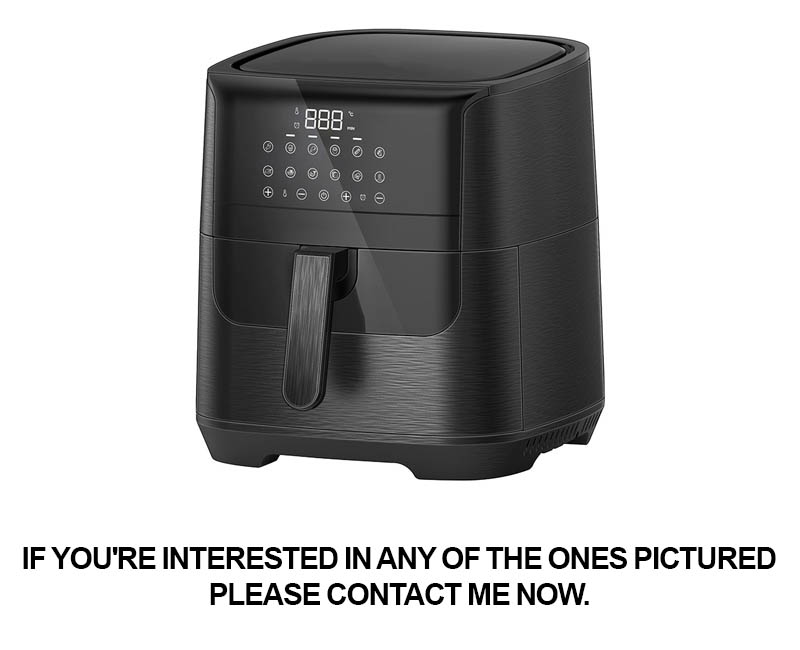
The commercial air fryer market has seen a surge in innovation, with manufacturers pushing the boundaries of what these appliances can do. From compact units designed for cafes to industrial-grade models for large-scale operations, the variety is vast. Here are some of the innovative designs that have set the best commercial air fryers apart.
Smart Technology Integration – Modern commercial air fryers are not just about cooking; they’re also about connectivity. Many models now come with smart technology that allows for remote control and monitoring. Users can adjust settings, track cooking progress, and even receive notifications via their smartphones, ensuring that their food is cooked to perfection without constant supervision.
Advanced Filtration Systems – One of the biggest concerns with fryers has always been the oil. The best commercial air fryers now feature advanced filtration systems that significantly reduce the amount of oil used, making them more sustainable and healthier. These systems can filter out particles and grease, extending the life of the fryer and minimizing maintenance.
Versatile Cooking Functions – The best commercial air fryers are no longer just for frying. They offer a range of cooking functions, including roasting, baking, and even dehydrating. This versatility means that restaurants and commercial kitchens can use the same machine for a variety of dishes, saving space and energy.
User-Friendly Interface – Designers have focused on creating intuitive interfaces that are easy to navigate. Large, clear displays, simple button layouts, and touchscreens have become standard, ensuring that operators can quickly adjust settings and switch between cooking modes without confusion.
Energy Efficiency – As environmental concerns grow, energy efficiency has become a key selling point. The most innovative commercial air fryers are designed to use less electricity, reducing operational costs and their carbon footprint. Some models even have eco-friendly modes that optimize energy use without compromising on cooking performance.
Customizable Cooking Profiles – Many high-end commercial air fryers allow for the creation of custom cooking profiles. These profiles can be saved and reused, making it easy to replicate recipes and ensure consistency across multiple batches. This feature is particularly beneficial for foodservice operators who need to maintain high standards of quality.
Safety Features – Safety is paramount in commercial kitchens, and the best air fryers are equipped with a range of safety features. Overheat protection, automatic shut-off mechanisms, and durable construction are standard, ensuring that the appliances can handle the rigors of a busy kitchen environment without posing a risk to staff or guests.
Sustainability and Eco-Friendly Materials – The use of sustainable materials is another trend that’s gaining traction. Some manufacturers are now using recycled materials for their air fryers, while others are exploring alternative cooking methods that reduce reliance on oil and energy.
Modular and Scalable Designs – For operators looking to expand their kitchen capabilities, modular and scalable designs are becoming more popular. These air fryers can be expanded or upgraded as needed, allowing businesses to grow their operations without having to replace their entire cooking equipment.
Custom Branding and Customization – Recognizing the importance of brand identity, some commercial air fryer manufacturers offer customization options. Restaurants can have their branding emblazoned on the units, creating a cohesive look that reflects their brand and enhances their kitchen aesthetics.
In summary, the best commercial air fryers are a testament to the ongoing innovation in kitchen technology. They offer a combination of advanced features, user-friendly design, and sustainability, making them a valuable asset for any commercial kitchen looking to improve efficiency and quality.
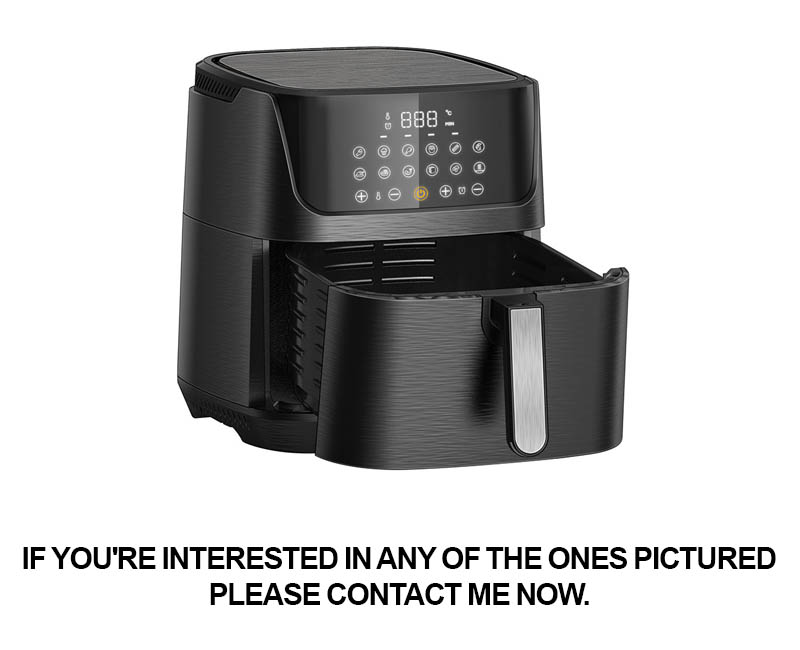
In the commercial air fryer sector, data-driven decisions are pivotal for manufacturers and investors alike. Here’s a delve into some key statistics that paint a clear picture of this dynamic market:
The market for commercial air fryers has seen a significant surge in demand over the past few years. Sales figures have shown a compounded annual growth rate (CAGR) that is projected to exceed 7% through 2025. This upward trend is being fueled by a growing awareness of health and wellness, as air fryers offer a healthier alternative to traditional deep-frying methods.
Consumer preferences are shifting towards low-fat, low-calorie cooking solutions, and commercial air fryers are perfectly positioned to cater to this demand. According to a recent survey, over 60% of consumers are interested in purchasing an air fryer for their commercial kitchens, driven by the promise of healthier food options with minimal oil usage.
In terms of market segmentation, the commercial air fryer sector is witnessing a rise in the demand for countertop models. These compact units are ideal for small-scale operations, such as cafes, delis, and food trucks. The countertop segment is expected to grow at a CAGR of around 8% due to its ease of installation and operation.
When it comes to geographic distribution, the Asia-Pacific region is leading the charge in commercial air fryer sales. Countries like China, India, and Japan are driving the market due to their high population density and growing middle class. The region is projected to account for nearly 40% of the global market share by 2025.
The technological advancements in the commercial air fryer sector are also noteworthy. Smart features, such as Wi-Fi connectivity and app integration, are becoming increasingly popular. These features allow operators to remotely control their fryers, monitor cooking times, and receive maintenance alerts. A report by MarketsandMarkets estimates that smart fryers will constitute around 25% of the market by 2025.
Energy efficiency is another critical factor in the commercial air fryer sector. As environmental concerns grow, manufacturers are focusing on creating air fryers that consume less energy. This shift is reflected in the market, with energy-saving models accounting for a significant portion of sales. Energy Star-rated air fryers, for instance, are becoming more common in commercial kitchens.
The cost of commercial air fryers varies widely depending on the brand, features, and capacity. Entry-level models can be purchased for as little as $500, while high-end units with advanced features can cost upwards of $2,000. Despite the price range, the overall demand for commercial air fryers is on the rise, indicating that price is not a primary barrier to market entry.
The competitive landscape of the commercial air fryer sector is diverse, with several key players vying for market share. Brands like Philips, Presto, and GoWISE USA are well-established in the industry, while newer entrants are bringing innovative designs and features to the table. The competition is driving innovation and is expected to lead to more efficient and cost-effective solutions in the coming years.
The environmental impact of commercial air fryers is also a point of interest. With the increasing focus on sustainability, manufacturers are exploring alternative materials and greener production processes. Some companies are even offering recycling programs for their old fryers, further reducing their environmental footprint.
In conclusion, the commercial air fryer sector is a rapidly evolving market, driven by consumer demand for healthier cooking options and technological advancements. The key statistics highlight a growing market, with a focus on energy efficiency, smart features, and environmental sustainability. As the industry continues to expand, data-driven decisions will play a crucial role in shaping its future.

In recent years, technology has revolutionized the production of commercial air fryers, transforming how these appliances are designed, manufactured, and operated. The integration of advanced technologies has not only improved efficiency but also enhanced the safety, versatility, and consumer appeal of these cooking devices.
The integration of smart sensors has become a cornerstone in the production of modern commercial air fryers. These sensors, such as temperature and humidity gauges, ensure that the fryer operates at precise settings, optimizing the cooking process and preventing overheating or undercooking. The use of IoT (Internet of Things) technology allows for real-time monitoring and control, enabling manufacturers to make adjustments remotely and ensuring consistent quality across batches.
Automation has played a significant role in streamlining the production process. Robotics and machine learning algorithms have been employed to handle tasks that were once labor-intensive, such as assembling parts, applying coatings, and quality control. This not only reduces the risk of human error but also increases productivity, leading to lower production costs.
Energy efficiency is a key focus in the commercial air fryer sector. Technological advancements have led to the development of fryers that consume less electricity while still maintaining high performance. This is achieved through improved insulation, more efficient heating elements, and innovative fan designs that circulate air more effectively. Such improvements not only reduce operational costs for businesses but also align with global sustainability goals.
The introduction of advanced materials has had a profound impact on the production of commercial air fryers. Lightweight yet durable materials like stainless steel and high-quality aluminum are used in the construction of fryers, enhancing their lifespan and reducing the overall weight. These materials also contribute to better heat distribution, ensuring a more even cooking experience.
Innovation in the heating elements has been a game-changer. Traditional oil fryers have been replaced by air fryers that use rapid air circulation to mimic the frying process without the oil. The production of these fryers involves the development of high-speed blowers and precise heat management systems that ensure the air reaches the optimal temperature for frying, browning, and roasting.
Safety features have seen a major upgrade with the help of technology. Modern commercial air fryers are equipped with features like automatic shut-off in case of overheating, cool-to-the-touch exteriors to prevent burns, and non-slip bases for stability. These advancements in safety technology have made commercial air fryers a safer option for professional kitchens.
Customization is another area where technology has made significant strides. Manufacturers can now produce air fryers tailored to specific customer needs, from different sizes and capacities to specialized coatings and accessories. This level of customization wasn’t possible with older manufacturing methods, allowing for a wider variety of products to meet diverse market demands.
The rise of 3D printing has also impacted the production process. While not yet widespread, this technology allows for the creation of complex parts with intricate designs that can’t be easily made with traditional methods. It’s a testament to the potential of technology to push the boundaries of what’s possible in air fryer design and manufacturing.
In terms of maintenance, technology has made it easier to keep commercial air fryers in top condition. Features like self-cleaning cycles, digital displays that provide maintenance reminders, and easy-to-remove parts for cleaning contribute to a more user-friendly experience for commercial users.
In conclusion, the impact of technology on commercial air fryer production is multifaceted. It ranges from enhancing efficiency and safety to allowing for greater customization and sustainability. As technology continues to evolve, we can expect to see even more innovative solutions that shape the future of commercial air fryer manufacturing.
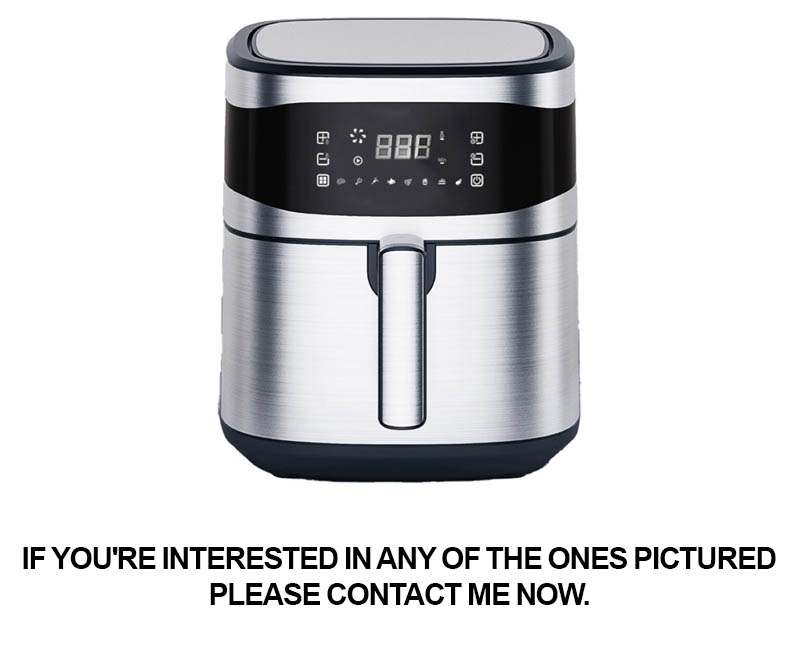
When selecting a commercial air fryer factory, there are several crucial factors to consider that can make or break your business. From quality control to customer service, here’s what you should be on the lookout for:
The Importance of Quality ManufacturingQuality is paramount in the commercial kitchen equipment industry. A reputable factory should be committed to producing air fryers that are durable, efficient, and reliable. Look for factories that use high-quality materials and advanced manufacturing processes to ensure the longevity and performance of their products.
Certifications and ComplianceEnsure that the commercial air fryer factory you choose adheres to international standards and regulations. Look for certifications such as CE, FDA, and ETL, which signify that the products meet safety and quality benchmarks. Compliance not only guarantees the safety of your customers but also ensures that your business remains compliant with legal requirements.
Customization OptionsEvery business has unique needs, and a flexible commercial air fryer factory should be able to cater to these requirements. Look for factories that offer customization services, allowing you to choose the size, features, and branding of your air fryers. This level of personalization can help your equipment stand out and align with your brand identity.
Advanced Technology and FeaturesThe best commercial air fryer factories invest in state-of-the-art technology to produce equipment with cutting-edge features. These might include programmable settings, smart temperature control, and energy-saving modes. A factory that keeps up with technological advancements will likely offer you products that are both efficient and future-proof.
Robust After-Sales SupportA reliable commercial air fryer factory should provide comprehensive after-sales support. This includes everything from installation assistance to technical support and warranty services. Ensure that the factory has a dedicated customer service team that is readily available to address any issues that may arise after the purchase.
Reputation and Customer ReviewsBefore finalizing your choice, take the time to research the reputation of the commercial air fryer factory. Look for reviews from other businesses that have purchased their equipment. Positive testimonials can be a great indicator of the factory’s commitment to quality and customer satisfaction.
Cost-EffectivenessWhile quality is crucial, it’s also important to consider the cost-effectiveness of the commercial air fryer factory. This means finding a balance between the price of the equipment and its value. Look for factories that offer competitive pricing without compromising on quality. Sometimes, a higher initial investment can lead to long-term savings through lower maintenance costs and increased efficiency.
Longevity and ReliabilityThe lifespan of your commercial air fryer is an essential factor to consider. A factory that produces durable equipment will save you money in the long run by reducing the frequency of replacements and repairs. Check for testimonials and case studies that highlight the longevity of the factory’s products.
Supply Chain and Lead TimesA reliable commercial air fryer factory should have a robust supply chain to ensure timely delivery. Consider the lead times for production and shipping, as delays can impact your business operations. A factory that offers quick turnaround times can be a significant asset to your business.
Factory Visits and InspectionsIf possible, consider visiting the factory in person to inspect the manufacturing process. This can give you a firsthand look at the quality control measures in place and the overall work environment. Seeing the factory’s operations can provide peace of mind and confidence in the factory’s commitment to excellence.
In conclusion, choosing the right commercial air fryer factory involves a careful evaluation of various factors, from quality and certifications to customization options and customer service. By thoroughly researching and considering these elements, you can make an informed decision that will benefit your business in the long term.

In the bustling world of commercial kitchen equipment, the implementation of commercial air fryers has become a game-changer. Let’s delve into some notable case studies that showcase the successful integration of these innovative appliances.
The integration of a commercial air fryer in a high-volume fast-food chain has significantly reduced cooking times and energy consumption. By replacing traditional deep fryers, this chain has seen a remarkable decrease in oil usage, leading to cost savings and a more sustainable operation.
A gourmet restaurant has harnessed the power of commercial air fryers to offer guests a healthier alternative to fried foods. The air fryer’s ability to crisp food without the need for excessive oil has allowed the restaurant to diversify its menu and cater to health-conscious diners.
A sports stadium has implemented commercial air fryers to cater to large crowds during events. The compact and efficient design of these fryers has made it possible to serve a variety of fried snacks with minimal space and effort, ensuring that fans can enjoy their favorite treats without waiting in long lines.
A catering service has found that commercial air fryers are perfect for large-scale events. The ability to cook a large quantity of food quickly and evenly has streamlined their operation, ensuring that every guest receives a high-quality meal with minimal waste.
A school cafeteria has embraced commercial air fryers to provide students with healthier options. The fryers’ versatility allows for a wide range of foods to be prepared, from French fries to chicken wings, all with less fat and fewer calories.
A local bakery has started using commercial air fryers to create crispy, golden-brown pastries without the need for deep frying. The air fryers have not only improved the health profile of their products but also reduced the risk of oil fires and maintenance issues.
A mobile food truck operator has discovered that commercial air fryers are a game-changer for their business. The portability and ease of use of these fryers have allowed the operator to serve a variety of fried foods on the go, attracting customers to their unique offerings.
A health-conscious food truck has implemented commercial air fryers to provide a healthier alternative to traditional fast-food fare. The fryers have enabled the truck to offer crispy, flavorful snacks with significantly less oil, aligning with the operator’s commitment to wellness.
A hospital cafeteria has introduced commercial air fryers to provide patients and staff with a variety of low-fat, high-protein meals. The fryers have become a staple in the kitchen, allowing for the preparation of everything from chicken tenders to sweet potato fries.
A food truck at a music festival has found that commercial air fryers are a hit with festival-goers. The fryers have allowed the truck to serve a wide range of fried foods quickly, ensuring that attendees can enjoy their snacks without missing out on the music.
These case studies highlight the versatility and efficiency of commercial air fryers in various settings. From fast-food chains to gourmet restaurants, sports stadiums to school cafeterias, the implementation of these fryers has demonstrated their ability to enhance food quality, reduce costs, and cater to the growing demand for healthier options.
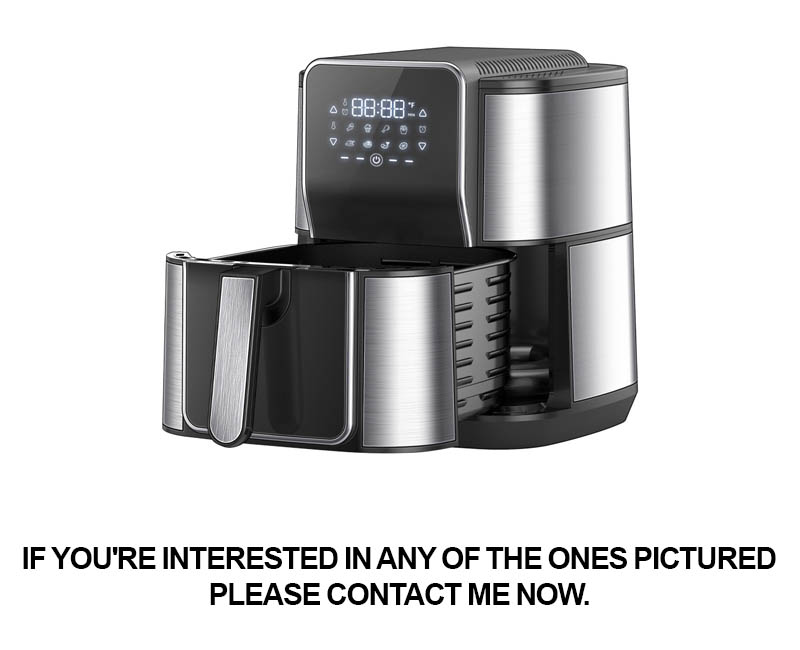
The commercial air fryer industry has been experiencing remarkable growth, driven by consumer demand for healthier and more convenient cooking solutions. Here’s a glimpse into the future prospects and predictions for this thriving sector.
Technological advancements are expected to play a pivotal role in shaping the future of commercial air fryers. With innovations like smart temperature controls and integrated timers, these appliances are becoming more intuitive and efficient. The ability to customize cooking settings to individual preferences will likely become a standard feature, making commercial air fryers even more versatile in various culinary settings.
As health consciousness continues to rise, the demand for low-fat, low-calorie cooking methods is on the upswing. Commercial air fryers are perfectly positioned to capitalize on this trend, offering a healthier alternative to traditional frying methods. Predictions suggest that the industry will see a surge in demand from restaurants and commercial kitchens looking to enhance their menu offerings with healthier fried food options.
Sustainability is another key factor that could drive the commercial air fryer industry forward. With environmental concerns at the forefront of many businesses’ minds, the energy efficiency of these appliances is likely to become a significant selling point. As manufacturers focus on creating eco-friendly fryers, the industry could see a shift towards more sustainable production processes and materials.
The rise of e-commerce and the direct-to-consumer model is expected to disrupt the traditional distribution channels for commercial air fryers. More manufacturers are likely to establish online platforms, allowing customers to purchase directly from the source. This could lead to increased competition and a wider variety of options for consumers, as well as more transparent pricing and faster delivery times.
Integration with other kitchen appliances is another area where the commercial air fryer industry might see significant advancements. The future could hold a seamless integration of fryers with ovens, grills, and even refrigeration units, creating a multifunctional kitchen environment that maximizes efficiency and minimizes space.
The global market for commercial air fryers is also expected to see a surge in demand as emerging economies grow. Countries with a rising middle class and increasing disposable income are likely to embrace the benefits of these appliances, leading to a global expansion of the industry.
Another prediction is the rise of personalized and modular fryers. Customers might be able to customize their fryers with specific features, such as different sizes or power outputs, to fit their specific needs. This modular approach would not only cater to a wider range of businesses but also allow for greater flexibility in the kitchen.
As the industry grows, the focus on safety and quality control is unlikely to diminish. With stricter regulations and consumer expectations for high-quality products, manufacturers will need to ensure their fryers are not only innovative but also reliable and safe to use.
The commercial air fryer industry is also likely to see a push towards innovation in food preparation. With the ability to cook a variety of foods with minimal oil, fryers could become a staple in kitchens that want to offer a diverse menu of dishes. This could lead to new recipes and culinary techniques that take advantage of the air frying process.
In conclusion, the future of the commercial air fryer industry is bright, with a host of potential developments on the horizon. From technological advancements to environmental concerns and changing consumer preferences, the industry is poised for continued growth and innovation. As long as manufacturers stay ahead of the curve and adapt to the evolving market demands, the commercial air fryer is set to remain a key player in the culinary world.
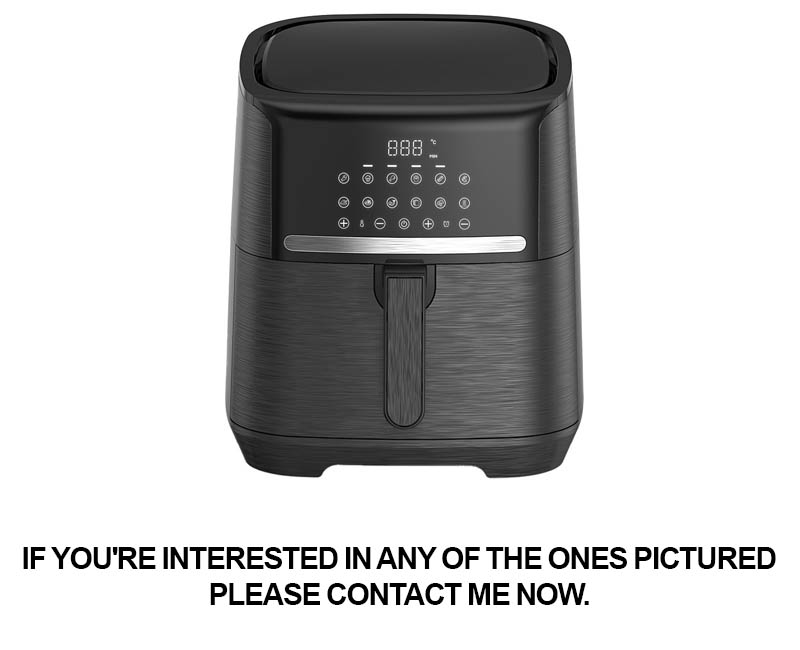
In the ever-evolving landscape of commercial kitchen equipment, the commercial air fryer has emerged as a revolutionary innovation. As we stand at the precipice of a new era, it’s clear that this technology is not just a fleeting trend but a cornerstone of future culinary practices. The commercial air fryer revolution is here, and its impact is profound. Here are some thoughts on what this means for the industry and how we can embrace this transformation.
The efficiency of commercial air fryers is undeniable. These appliances use hot air to circulate around food, reducing the need for oil and, in turn, the calorie content of the final dish. This not only caters to the health-conscious consumer but also to businesses looking to cut costs and improve their environmental footprint. The ability to produce crispy, golden-brown food with minimal oil has made these fryers a favorite among chefs and operators alike.
The market for commercial air fryers is expanding rapidly. With health concerns at the forefront of consumer consciousness, the demand for healthier cooking methods has surged. This shift has prompted a surge in innovation, with manufacturers pushing the boundaries of what these fryers can do. The market is now saturated with a variety of models, each boasting unique features and capabilities, making it easier for businesses to find the perfect fit for their needs.
One of the key factors driving the success of commercial air fryers is their versatility. They can handle a wide range of foods, from vegetables and meats to desserts and snacks. This flexibility has allowed restaurants, cafes, and catering services to diversify their menus without the need for multiple cooking appliances. The ability to offer a broader selection of dishes can significantly enhance customer satisfaction and attract a wider audience.
The integration of smart technology into commercial air fryers has been another game-changer. Modern fryers often come with programmable settings, timers, and temperature controls, allowing operators to achieve consistent results every time. Some models even offer remote monitoring and control via apps, which is particularly useful for busy kitchens or those with multiple units. This technological integration not only streamlines operations but also ensures that food is cooked to perfection.
The commercial air fryer sector is not without its challenges. One of the most significant is the initial cost. High-quality commercial air fryers can be a substantial investment, especially for smaller businesses. However, the long-term savings on oil, maintenance, and labor can often outweigh the initial outlay. Additionally, there is a learning curve associated with using these appliances efficiently, which some operators may find daunting.
Despite these challenges, the industry is optimistic about the future of commercial air fryers. Many businesses have reported a positive return on investment within a year of purchasing these fryers. The cost-effectiveness, combined with the health benefits and technological advancements, makes them a compelling choice for any commercial kitchen.
One of the most intriguing aspects of the commercial air fryer revolution is the impact it has on sustainability. By reducing oil usage and energy consumption, these fryers contribute to a more eco-friendly kitchen environment. This aligns with the broader trend towards sustainability in the foodservice industry, and it’s likely that we’ll see even more eco-conscious innovations in the coming years.
As the commercial air fryer market continues to grow, we can expect to see further advancements in technology and design. One potential development is the integration of AI and machine learning algorithms to optimize cooking processes and energy usage. This could lead to even greater efficiency and cost savings for businesses.
In conclusion, the commercial air fryer revolution is not just a trend; it’s a fundamental shift in how we approach cooking in commercial kitchens. By embracing this technology, businesses can offer healthier options, reduce costs, and contribute to a more sustainable future. As the industry evolves, so too will the capabilities and benefits of these fryers, making them an indispensable part of any modern kitchen.